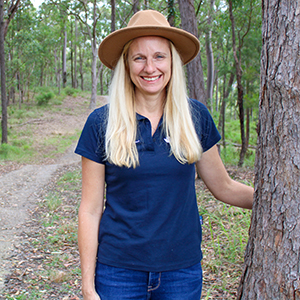To help reduce those risks and grow their business, the Lamberts were keen to seek expert advice to put safety at the centre of the day-to-day operations at their farm and engineering consultancy in Meringur, far north-west Victoria.
At the suggestion of close friends, the Lamberts called WorkSafe’s OHS Essentials program, where independent consultants provide free, confidential and personalised safety advice for small to medium businesses.
Mr Lambert said the decision not only gave them confidence that they were doing everything they could to keep themselves, their workers and their family safe, but had also helped to diversify and grow their business.
“You’re getting advice and you’re getting support and it steers you in the right direction because there are some things you just don’t know, or don’t see, or you’re not aware of,” Mr Lambert said in a new video to promote WorkSafe’s OHS Essentials program.
“There’s a level of danger involved in much of the work we do around the property but you can help eliminate or control those risks by following the right procedures and doing things the safest way.”
As farms across the state prepare for a busy harvest season, OHS Essentials Consultant Paul Livingstone said consultants like him were there to explain OHS regulations and help farmers develop safety systems suited to their business that could be put into practice every day.
“The OHS Essentials program is available for all farmers whether they have WorkCover insurance or not. It provides simple methods for protecting themselves and their employees,” Mr Livingstone said.
“The benefits for farmers are fewer injuries, less downtime and greater efficiency in generating their product.”
Fatigue, working alone and with heavy machinery, increased vehicle traffic and working near overhead powerlines are among the common safety risks at harvest time.
Simple safety measures to reduce those risks include:
- Adequate breaks after each day so that you, your contractors and your workers have enough time to travel home, eat, relax and sleep before the next day begins.
- A system to stay in contact with isolated workers.
- Controls on traffic movement and keeping children away from work areas.
- Appropriate guarding on machinery and shutting all machinery down before attempting to clear blockages and reinstating all guards before resuming work.
- Maintaining a safe distance from all powerlines and not storing, loading or unloading items near overhead powerlines. Inform your workers what to do if they hit a powerline.
- Ensuring contractors and seasonal workers have an induction to the property and job, are consulted about safety issues and are competent in operating any machinery and to undertake their role safely.
WorkSafe Executive Director of Health and Safety Andrew Keen said that harvest was often approached with a mindset that the work must get done at all costs.
“There is a lot about harvest that you can’t control, like the weather and markets, but safety is one area you can plan for and, in doing so, get through this busy time of year not only safely but more efficiently and with less stress,” Mr Keen said.
“We want everyone to put safety at the front of their mind when planning their day’s activities and, if there’s a safety risk, make changes.”
WorkSafe’s hard-hitting farm safety campaign has also returned across television, print, online and social media to remind farmers and their families that deaths and serious injuries can happen to anyone who does not prioritise safety.
For more on the OHS Essentials Program, visit www.worksafe.vic.gov.au/ohsessentials. For more on farm safety visit www.worksafe.vic.gov.au/agriculture.
OHS Essentials program facts:
- In the 2020-21 financial year, 1120 businesses signed up to the free OHS Essentials program.
- Of those businesses, only 45 were in the agriculture sector.
- OHS Essentials Consultants can confidentially assist farmers to identify hazards and injury risks on their farms; provide guidance on creating and maintaining a safe workplace; and work with farmers to develop practical safety action plans.








